Wearable and comfortable e-textile headband for long-term acquisition of forehead EEG signals
Manuel Reis Carneiro
Aníbal T. de Almeida
Mahmoud Tavakoli
Electroencephalography (EEG) has a wide range of applications in medical diagnosis, and a novel form of Human Machine Interfaces (HMI) for controlling prosthetic implants, wheelchairs, and home appliances in various forms of paralysis. However, the current EEG setups are composed of many wires hanging down from the system, and individual electrodes that must be set manually, which is time-consuming. As a result, the overall system is neither comfortable nor aesthetically appealing.
Here, we introduce for the first time, a comfortable textile-based EEG headband system that is soft, conformal to the skin, and comfortable. We present materials and methods for the fabrication of multi-layer stretchable e-textile, that interfaces the human epidermis from one side through printed electrodes and interfaces a rigid PCB island on the second layer.
We as well show application of the developed headband for usage in Human Machine Interfaces and Sleep Data Acquisition. Altogether, this device is step toward wider use of EEG acquisition devices for daily-use applications.
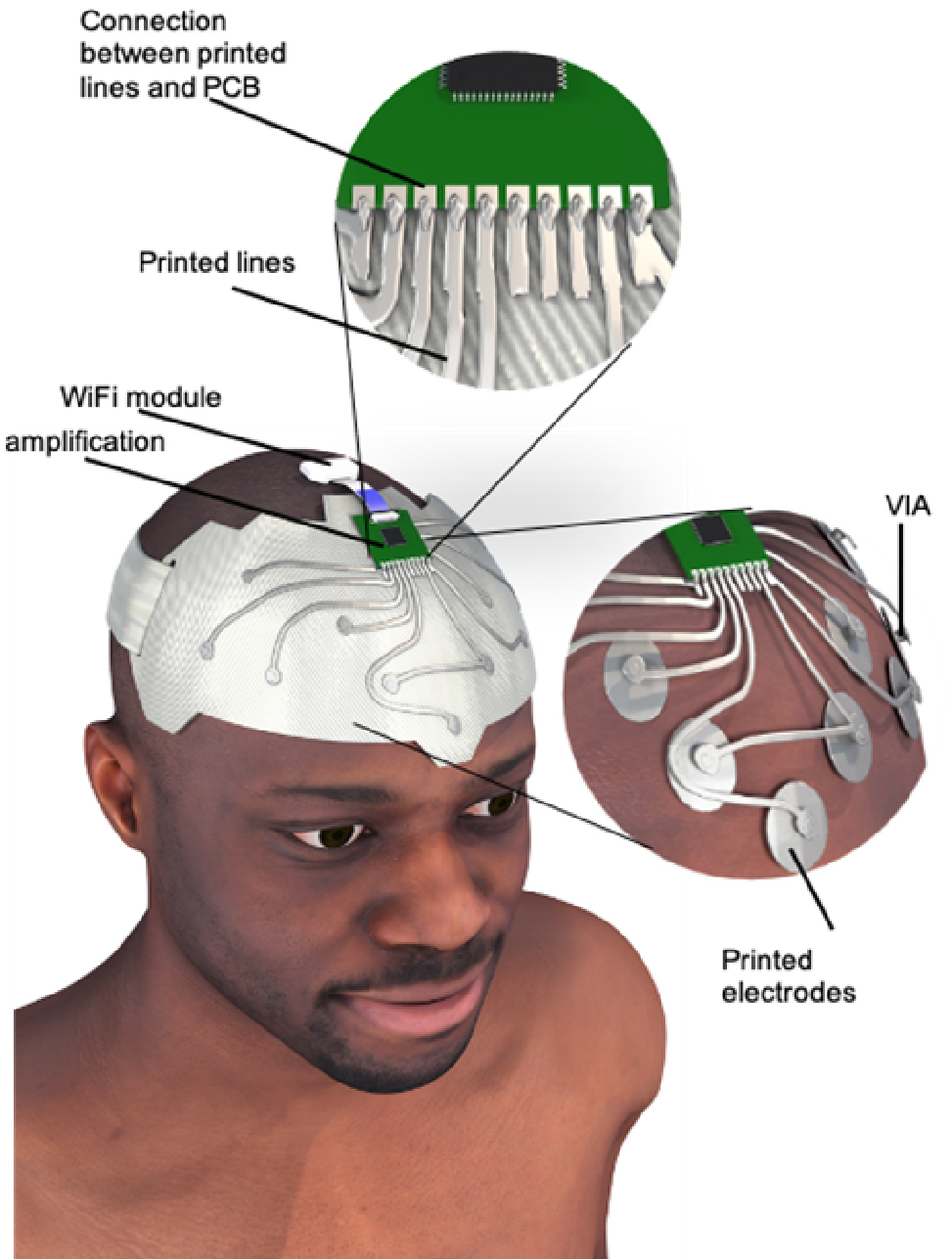
Textile EEG acquisition headband proposed in this work. Top detail: Connection between rigid PCB and textile printed conductive lines by means of an ink drop joint. Right detail: Contact between the printed electrodes and the skin in the forehead.
Schematic of the patch fabrication process. A: The latex impregnated fabric is cured on top of the glass in order to cure uniformly. B: The vias on the fabric are cut using a Co2 laser. C: A previously cut stencil is placed on the fabric and the ink is spread using a sharp blade or spatula. D: The stencil is carefully removed, and the printed electrodes are let do dry. E: The fabric is flipped over and the process is repeated to create the circuit interconnects.
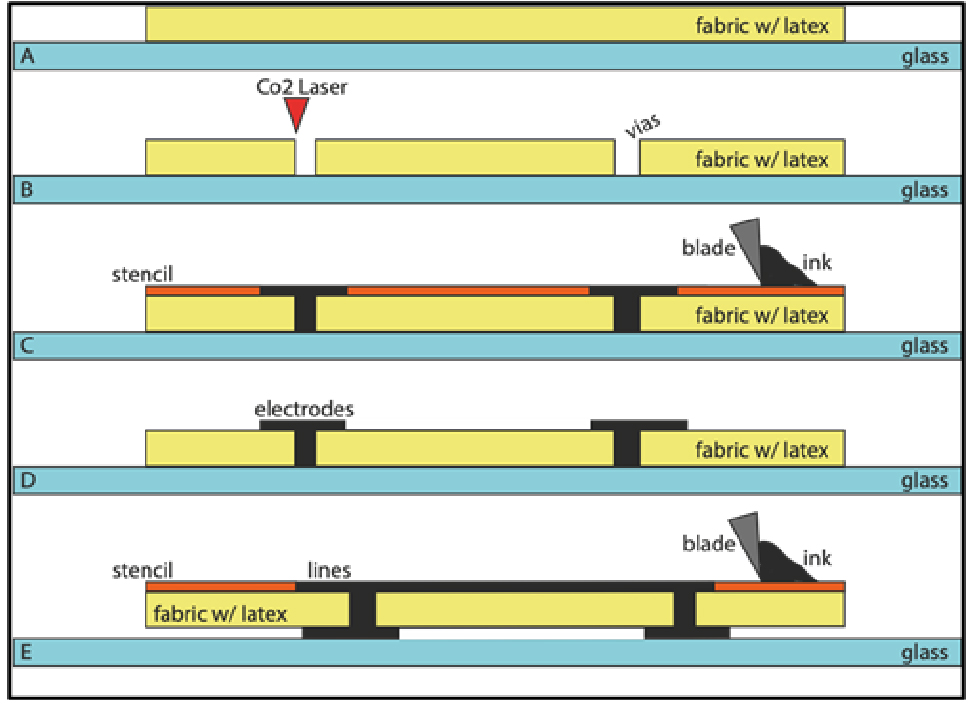
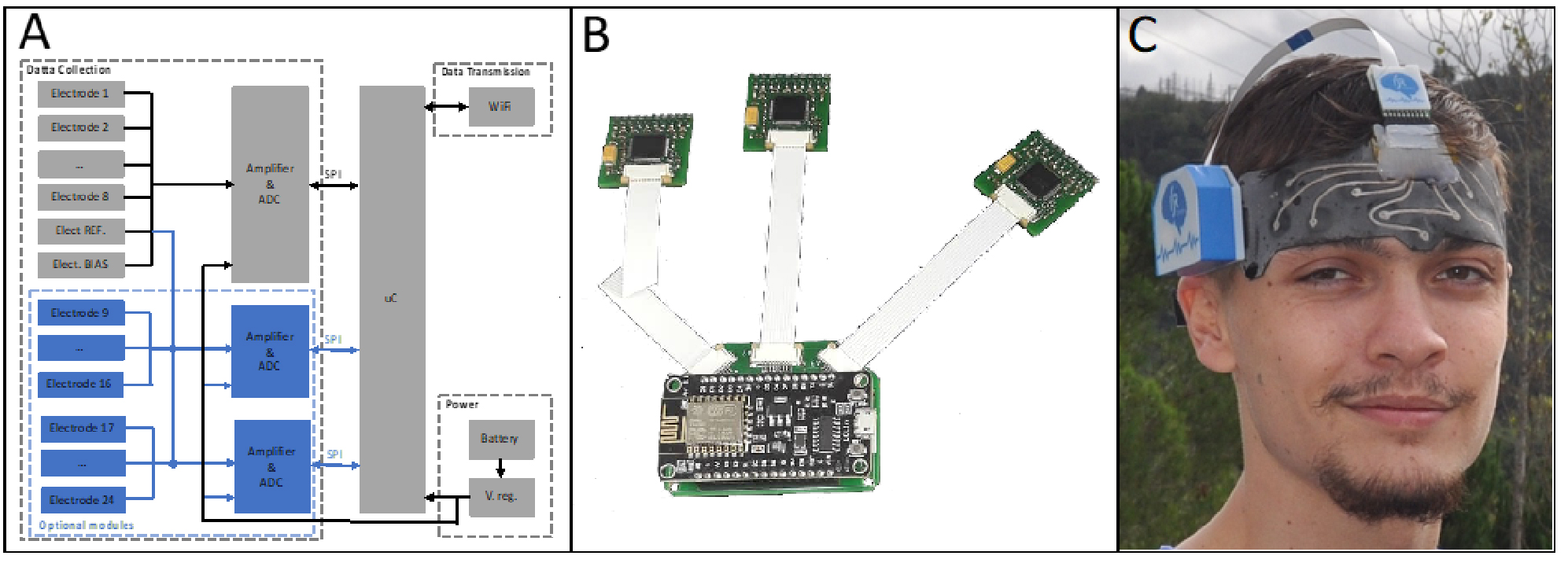
A: Block diagram illustrating the main components of the device, comprising data collection and data transmission blocks, power circuit and data processing unit. B: The modularity of the system allows for several amplifiers to be connected simultaneously to the same processing and transmission board. C: Working prototype of the EEG acquisition system proposed in this work.
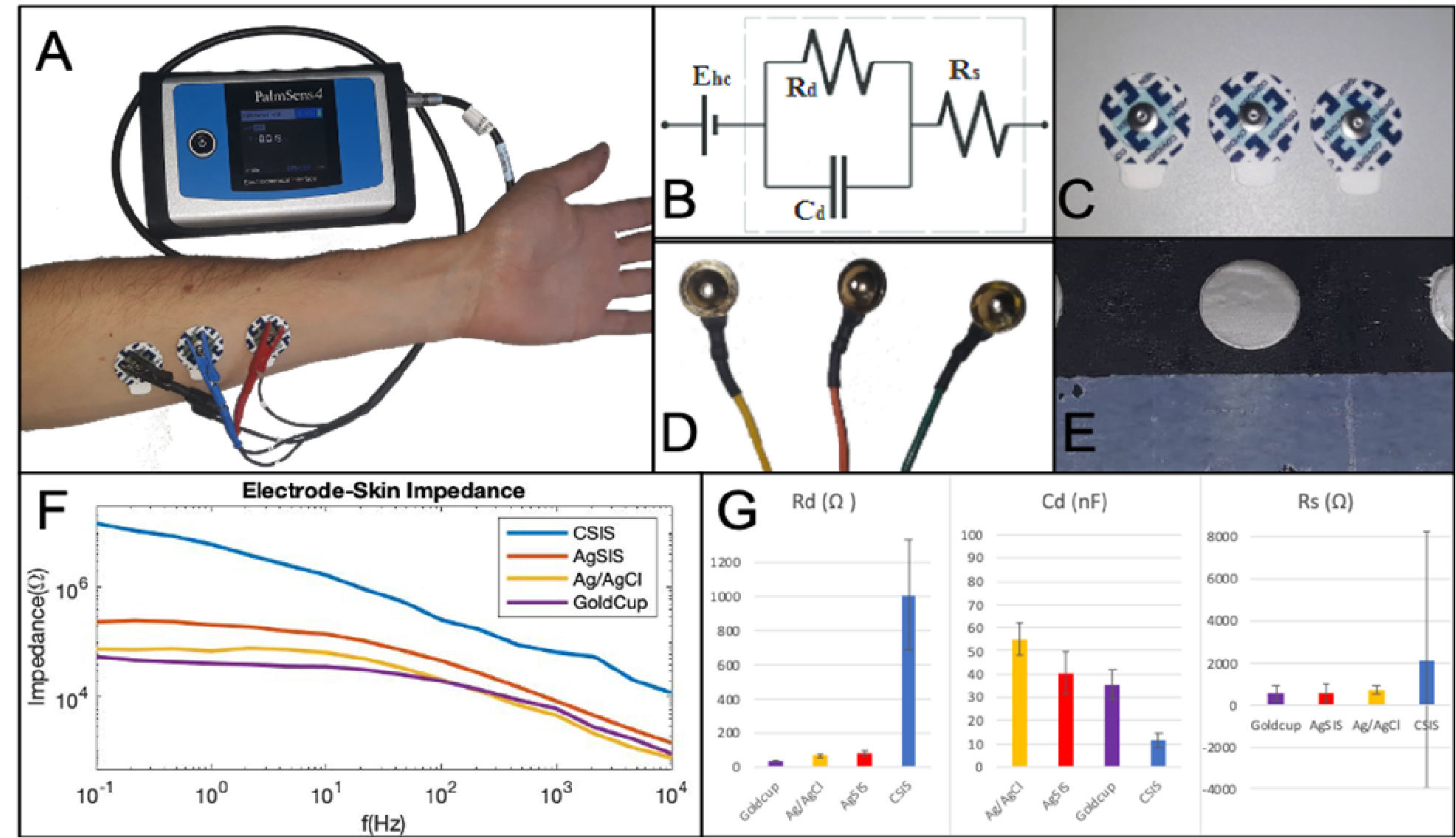
Electrode-skin impedance analysis and electrode characterization. A: experimental setup – two electrodes placed over the subject’s forearm are connected to the impedance analyzer and a frequency sweep is performed. B: single electrode/skin interface simplification circuit for the system’s equivalent model. C: Gold-standard commercially available pre-gelled Ag/AgCl and D: Goldcup electrodes. E: Novel conductive ink electrodes. F: Bode plots of the electrode-skin impedance of each of the tested electrodes (Ag/AgCl, Goldcup – interfaced to the skin via a layer of Ten20 conductive paste, CSIS and AgSIS). G: Components of the equivalent electrode-skin model (Rd, Cd and Rs) for each of the tested electrode materials.
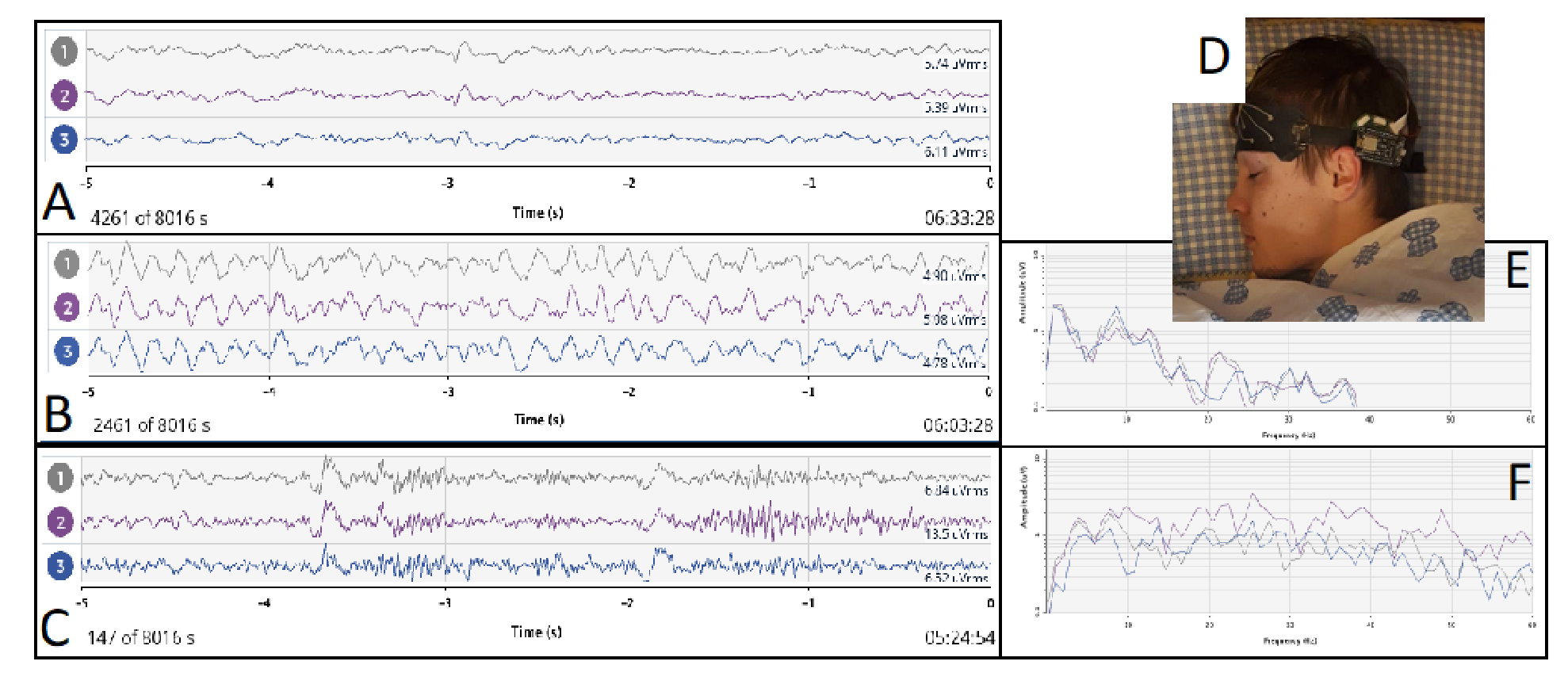
Sleep data acquisition. A: subject wearing the proposed EEG acquisition headband during sleep. B,C: EEG activity during sleep. Low-frequency waves can be observed D: Normal awake EEG activity. E: Predominant frequencies in EEG during sleep. High frequencies in EEG during sleep. High-frequency activity is almost non-existing during sleep F: Existing frequencies in a normal awake EEG
Wearable and comfortable e-textile headband for long-term acquisition of forehead EEG signals.
M. R. Carneiro, A. T. De Almeida and M. Tavakoli, “Wearable and comfortable e-textile headband for long-term acquisition of forehead EEG signals,” in IEEE Sensors Journal, doi: 10.1109/JSEN.2020.3009629.

